How Much Water Does A Cat Need to Drink?
There is no set answer to this question. Like all living creatures water is essential to maintain vital bodily functions in cats. Cats can suffer from dehydration resulting in kidney problems if they do not drink enough water. An adequate intake of water is necessary to flush out toxins from the kidneys. Cats can also suffer from health problems if they drink too much water, and may develop a condition called polydipsia. In general cats usually consume about a cup of water a day. This will increase if they live on a diet of dried food. If your cat significantly increases the amount of water it drinks you should consult a vet for further investigations especially if the cat has also lost weight recently.
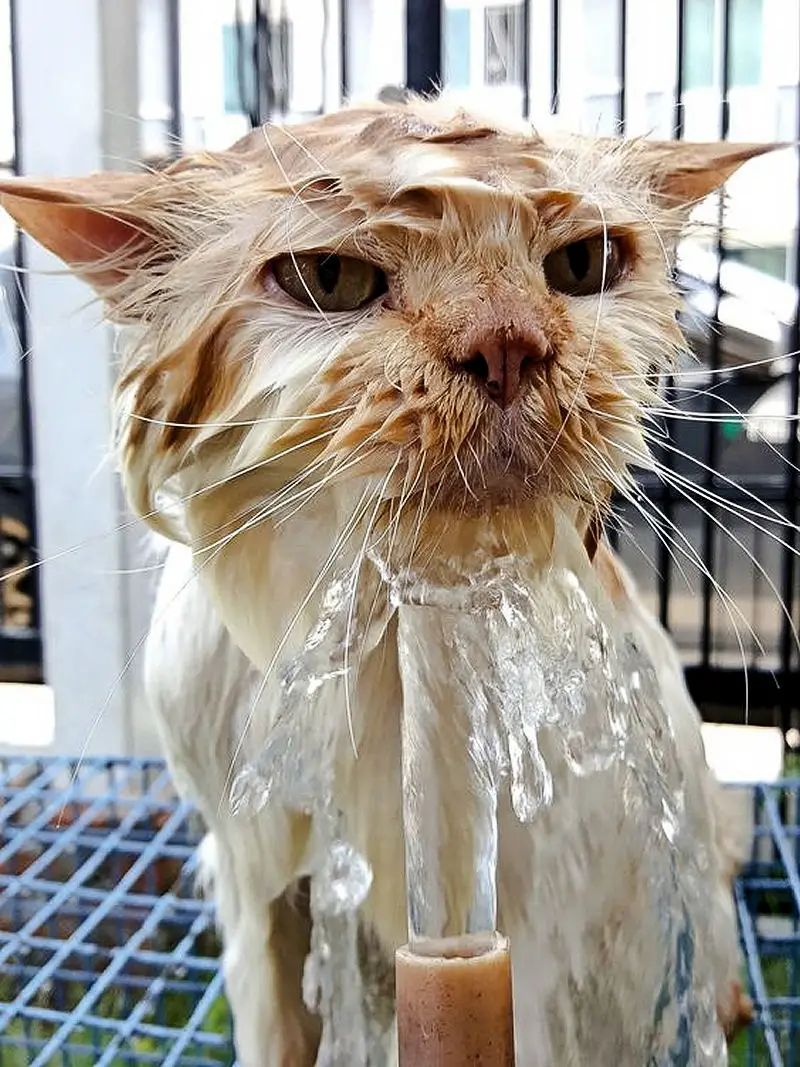
Cats originated as desert animals obtaining most of their water supply from their prey – small rodents and the like. While modern versions of cat food do offer some degree of hydration, the comparison is far from fair.
Since cats received so much water from their prey in the past, they never took to drinking enough water by itself. This leaves the modern house cat open to a serious risk of dehydration and other health issues, caused by the lack of water necessary for their systems to function as they should.
The Importance of Hydration
Feline dehydration can be caused by many different factors from lack of available drinking water to illness. It’s extremely important to ensure a cat doesn’t become dehydrated, especially for those felines afflicted by diabetes or renal failure, as those two illnesses in particular cause increased urination which in turn causes increased risk for dehydration. The symptoms of dehydration are constipation, lethargy, dry mouth, sunken eyes, increased heart rate, poor skin elasticity, and poor capillary refill time. There are two tests an owner can perform to check for skin elasticity and capillary refill.
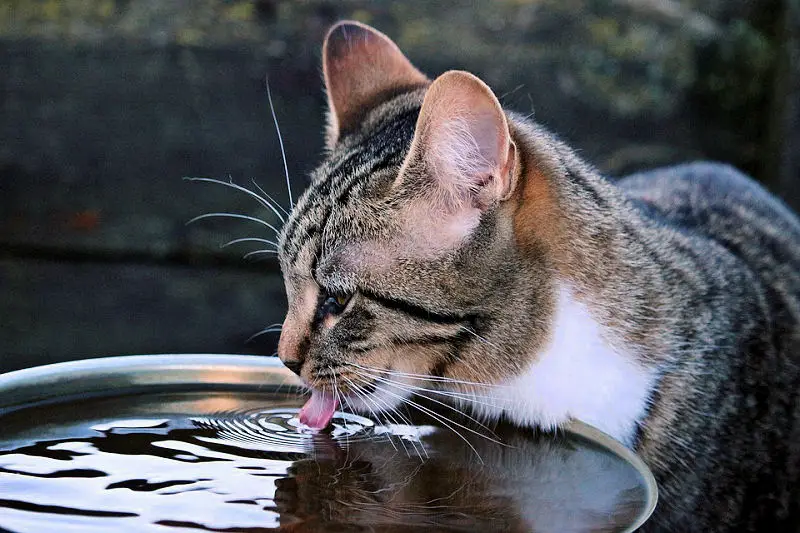
To check skin elasticity, grasp some skin at the base of the neck and then release. If the skin does not spring back immediately, the feline is in a state of dehydration.
To check capillary refill time, press a finger against the cats gum. Once the finger is removed, a white spot will be present. Time how long it takes for the white spot to turn pink again. It should only take one to two seconds. If it takes longer than that, the cat is dehydrated.
Enough cannot be said about ensuring a feline remains hydrated. A cat stuck inside a home or apartment 24/7 without water to drink that they enjoy, can easily lead to a state of dehydration.
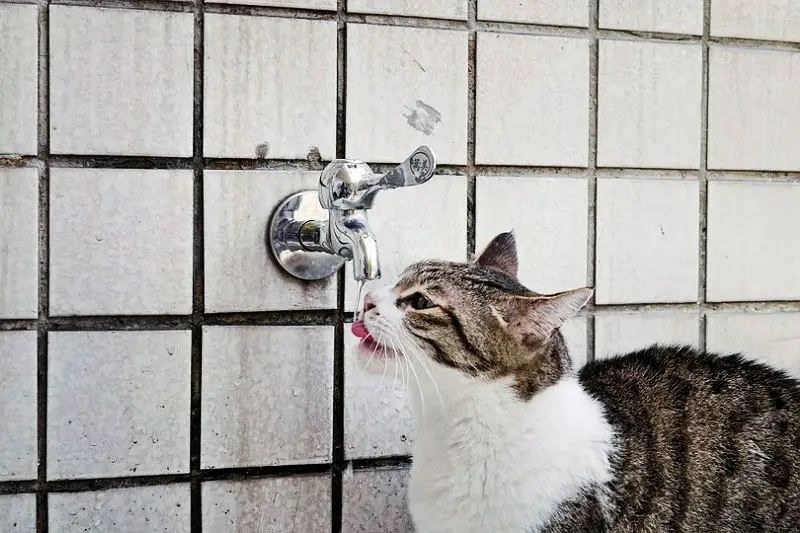
It’s extremely important to monitor a cat’s rate of water consumption and, if low, take measures to improve that rate. Dehydration can greatly shorten a feline’s life, but it’s normally a very preventable problem that only takes a little observation and trial and error to correct.
Water consumption is linked to diet. In the wild the cat would eat prey containing 70% water content. Dried cat food contains only 10% water whilst tinned or pouched food contains around 80% water. It is therefore obvious that a cat fed on a diet of dried food will need to consume more water than one fed on tinned food. To check the levels of hydration pinch a small amount of skin on the back of your cat’s neck. If it springs back easily your cat is adequately hydrated. This is similar to testing your own hydration level by squeezing the skin on the back of your hand.
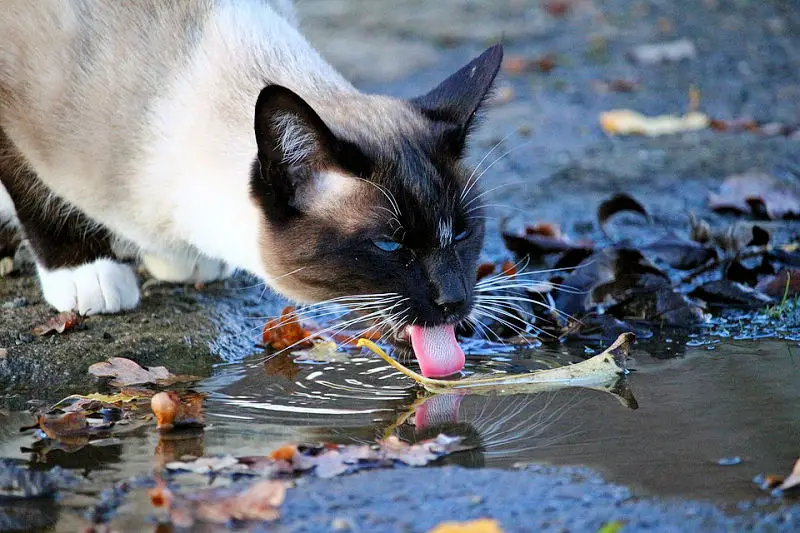
It is commonly thought that cats hate water but this is not true. They do not like to be immersed in water but most are fascinated by running water and they would prefer to drink running water rather than drink from a bowl. Many cats like to play with water, splashing it with their paws. It is thought they prefer running water as this most closely simulates how they would drink in the wild from running streams, which they would perceive as being safer than stagnant water.
Cats have very sensitive paw pads which they use to test the temperature of running water. Provide your cat with fresh water several times a day if you can. Also try to locate the water away from the food source as research shows that cats prefer to drink water away from their food source.
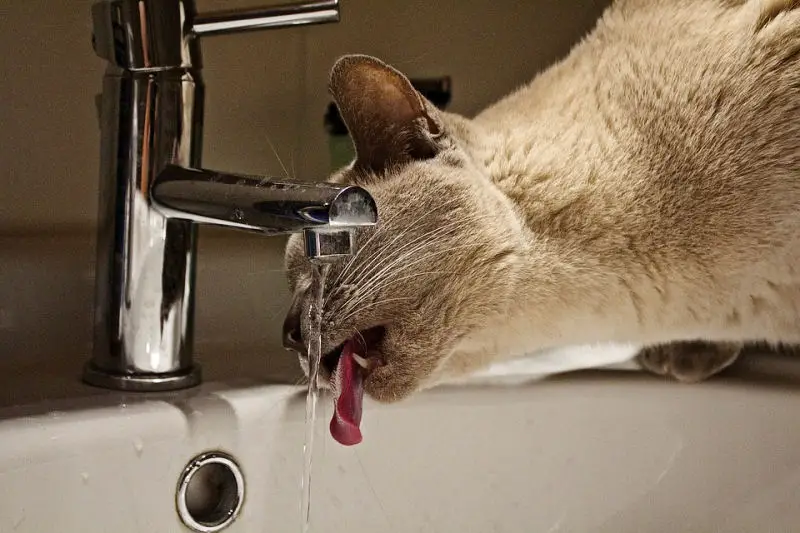
Are you worried that your cat may not be drinking enough? To entice a cat to drink more water takes a little trial and error, but once the magical combination is found, a cat owner should have no problem with their cat remaining hydrated.
7 tips to encourage your furry friend to drink up!
1. Water Type
Many people think water is water, but this is not entirely true. There are various types of water from tap water to distilled to mineral. Each cat will have their own preference. Try putting out several bowls of different types of water and see which one they prefer, but make sure all the bowls are identical, as this can be a factor as well in whether or not a cat will drink. Frequently changing their water is crucial to keeping your cat hydrated, since they prefer newer, fresh water over stagnant old water.
2. Bowls
The type of bowl makes a huge difference. Stainless steel or ceramic will have the highest rate of success. Plastic is a porous material and tends to soak up odor. While a human may not be able to smell it, a cat will and may not want to drink it thinking the water is tainted. One must remember that cats are generally very picky about cleanliness.
Tip: A bowl for each. Like people, cats don’t all enjoy drinking out of the same cup. Always provide a separate water bowl for every pet in your household. If you have a home with two or more levels, consider putting a bowl on each so your cats remember to drink more often.
The drinking bowl or container should be wide enough to fit their whole face (including whiskers) to accommodate for their interesting need to see their surroundings while drinking.
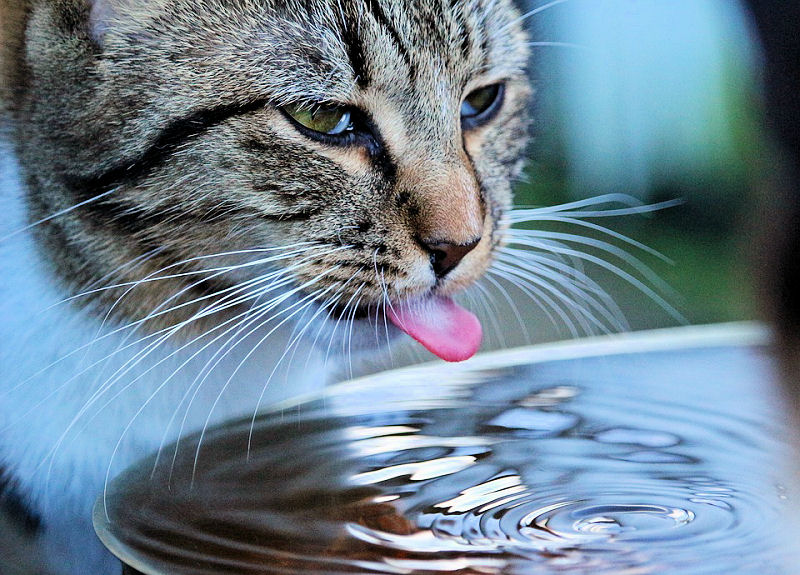
3. Cleanliness
Water bowls should be cleaned with hot soapy water on a daily basis. Nobody likes to drink out of a dirty glass. It’s logical to believe a cat does not enjoy it either.
4. Placement
Cats also have a preference of where they want their water placed. Try placing several bowls throughout the house and see which ones show signs of having been used.
5. Multiple Cats
Having multiple cats in the home means having multiple food bowls, but it also means having multiple water bowls as well. Smelling another cat around their water bowl can deter the desire to drink water. Nobody likes drinking after another human being and cats do not like drinking after another cat either.
6. Food Additive
Until a cat owner is able to find the best way to encourage their cat to drink water, it may be necessary to use it as a food additive to ensure the cat stays hydrated. Water can be added to either dry or wet food. A bowl of water may also be “flavored” by adding chicken broth or some tuna juice. Normally a cat that will not drink water will go after a bowl of watered down broth.
7. Drinking Fountain – Running Water
The benefits of a cat drinking fountain are numerous. Not only do they store a massive amount of water, but this water is continually circulated through a filter and purifier and aerated to keep its fresh, bubbly texture and sound.
Like most pet items, cat water fountains come in many shapes and sizes, ranging from single cat use to having multiple cats drink in tandem from the fountain. The water always taste’s fresh, since the filter system removes any impurities and the stagnant taste via a charcoal filter.
Some models rotate the water in a circular fashion like a river, while others provide free-falling waterfall effects to amuse and enrich. Some models go so far as to provide areas for food or plant growth. Most every cat water fountain is extremely faint to the ear, so noise shouldn’t ever be an issue. Pet fountains are available in a variety of sizes and can hold up to 5 litres of constantly running water which is typically kept clean and fresh by a charcoal filter.
As noted above, cats hate to share a water bowl with another animal but any number of cats are happy to share one drinking fountain.
Tip: If you’re at all concerned about dehydration in your cat, then we recommend getting Fluffy checked by a vet. If you have a good pet insurance plan you may even be covered. If not, you might want to consider using a pet insurance comparison service to get the best rate. For example Compare Pet Insurance. Many quality insurance plans let you select flexible plans to fit your cat purrfectly, such as those from ASPCA Pet Health Insurance or Liberty Insurance PetCare.
Summary
The infographic below (from PetCo) has some additional and very interesting Cat Hydration Facts.
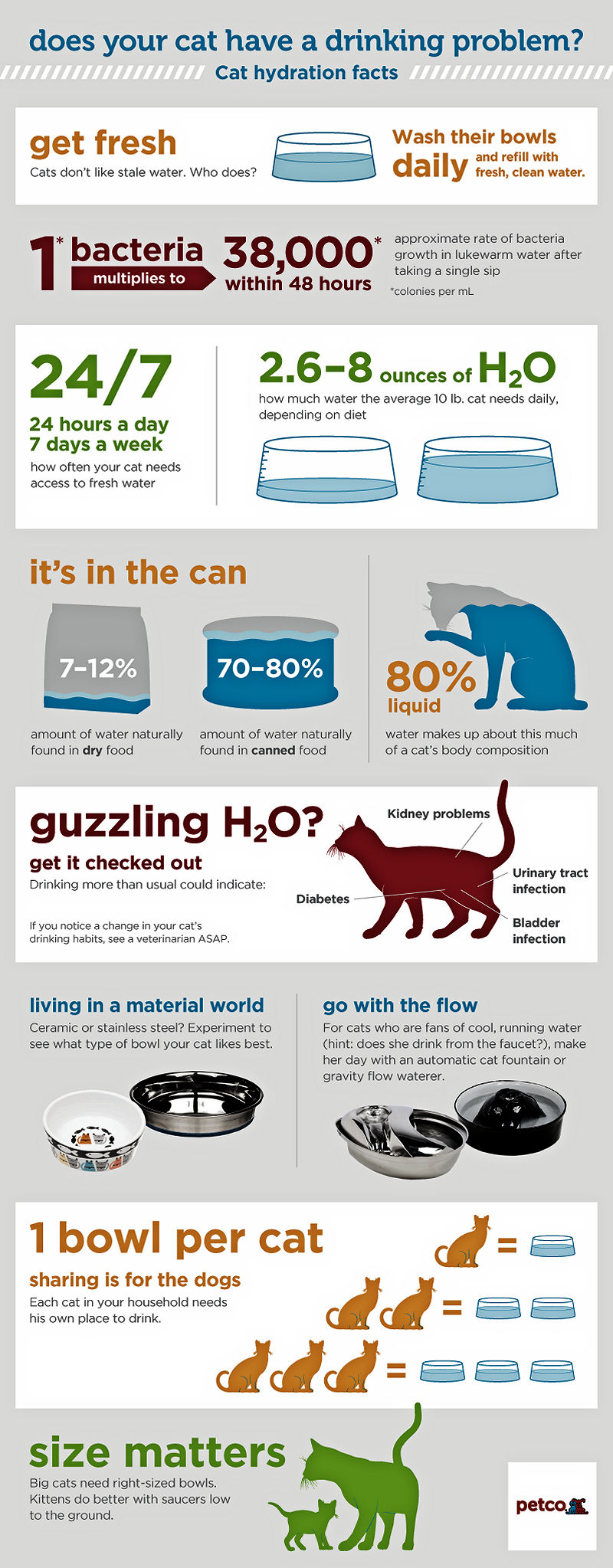
Have you ever had an issue with dehydration in your cat(s)? Please drop us a comment in the “Leave a Reply” box below.
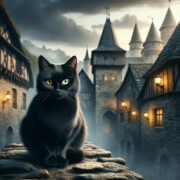
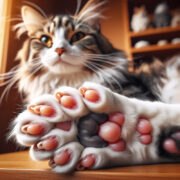
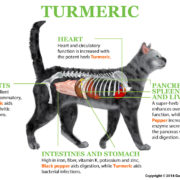
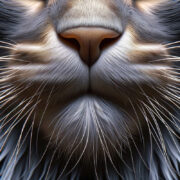
a sick cat is often a dehydrated cat. I use an infant ear syringe (more of a squeeze bulb with a tube) to get water into my cats when they need help.
Exactly how do you do that with out drowning the kitty?
Comment above was for Aleut… please let me know @ [email protected]
From the time they are kittens we mix warm water with all wet food so later in life when the cat needs a boost it isn’t all of a sudden getting soupy wet food seems to work well for us 🙂
I guess my cats are weird. They would rather drink out of our german shephards water bowl than their own! They have to get up on their hind legs to get to it. Pretty funny!
Your cats are well adjusted! Donald (my cat) also sips from the dogs bowls. Although he has landed himself in hospital of late and we are not sure why. He will not eat or drink. this has been for 2.5 days now.
VERY WORRIES
he is with the vet
My cat also vet tried to take blood for thyroid or kidneys but my cat got to distressed so have to take her back tomorrow and leave her there she has become dehydrated and I’ve tried to syringe water into her mouth but is having none of it I’m very concerned all the best for your cat X
Just wanted to leave an unsolicited shout out about the Thirsty Cat fountains — We’re on our second because clumsy me dropped the first, but I would never consider another fountain for my kitties! They are the best and have even my stubborn Aryana drinking more. And they are so very, very easy to clean, beautiful, and durable (as long as cat mom isn’t a klutz!) The first lasted several years; we’re into year three on the second and it’s as beautiful and working as well as when it came out of it’s (meticulously packaged) shipping carton. Two cat friends who tried them on my recommendation are as sold as we are. Definitely a “four paws up” product!
What’s the brand name of your fountain?
My cat only 7 has diabetes ( I trapped her on New Year’s Day ) she was diagnosed shortly after that . She is now on insulin
She stayed in boarding at the vet last week and they didn’t give her her insulin and she stopped eating
We are trying to get her back on track but she keeps getting dehydrated ends up back at the vet for fluids , tnrw will be the 4 day of this . I’m at my wits end why isn’t she staying hydrated ? 🙁
When my cat had chronic renal failure, she would also get dehydrated. A fountain made a world of difference as she loved to drink out of it. When she was first diagnosed with CRF, she stayed at the vet for four days, on IV fluids to flush her kidneys and to rehydrate her. The fountain awaited her when she returned. However, after that four days, she would get really stressed going to the vet (afraid we were going to leave her again) and it would take her three days to recover. That was too hard on her with her fragile health, so the vet taught me how to give her subcutaneous fluids at home. At first it was mentally hard on me, but it made such a difference in her life that I made myself get over it. When first diagnosed with CRF, her estimated lifespan was 6-9 months. With giving her the fluids at home and making sure she ate the prescription kidney food, she lived comfortably for 3 more years. I highly recommend drinking fountains and learning to give fluids. Our vet now recommends fountains to all feline patients!
I’ve never had a problem getting my cat to drink water. She loves it, especially the bottled spring water I use for my coffee, but plain ol’ tap water is also just fine with her. Also, her water dish is neither ceramic or stainless steel, it’s plastic, and it’s right next to her food dish. I recently switched her from dry food to wet, so now, although she still drinks water, it’s just not as much.
Hi there ,
Thanks for brilliant post about cats dehydration.i found this step “7 tips to encourage your furry friend to drink up”
Keep this up. I am going to subscribe your blog.
Cats that find water to eat, you can install a separate faucet in your pump service and pump booster, in your motor home or yard. Cats or other animals can quench their thirst with a container full of water next to the pump or booster pump and water supply system.